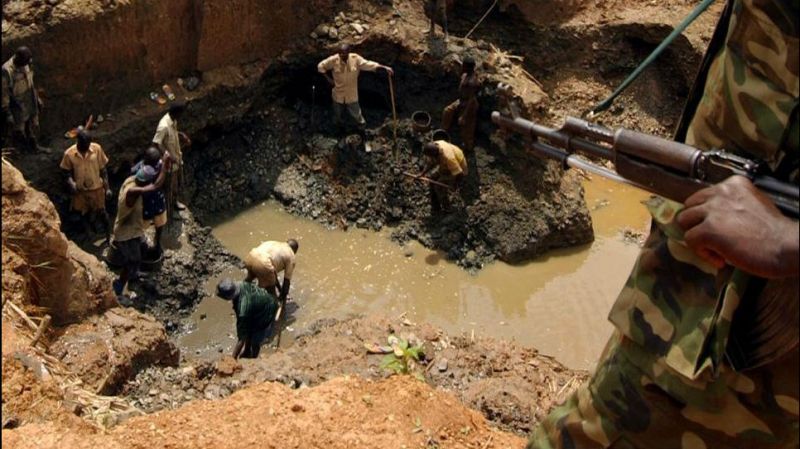The Chains That Blind Us
Global supply chains need better paper trails to deal with human rights abuses in conflict zones

When it comes to precious commodities, few are as valuable as gold and diamonds. But the reality is that these sought-after symbols of luxury, along with a slew of other valuable minerals, frequently originate in conflict zones. Too often they are sourced by people working in challenging conditions who are inadequately compensated for their labour.
The nature of the contemporary global value chain, however, can worsen these problems by making it hard to trace materials to their original sources. A person selling a piece of jewelry in Canada, for example, typically will know very little about where its materials originated or how those who extracted the raw materials were treated. According to experts, however, bringing change to the industry means introducing more transparency into supply chains via “paper trails” such as a chain of custody.
“There is growing momentum around provenance and chain of custody and due diligence for all materials in all sectors,” says Joanne Lebert, executive director of IMPACT, a non-profit organization that has been working to improve the management of natural resources in conflict-prone areas of Africa for more than three decades. “We must transform how natural resources are managed in areas where human rights are at risk.”
Accountability on a Global Scale
Lebert spoke at Smith School of Business as part of a conference held by the Canadian chapter of the Academy of International Business on multinational corporation governance of global value chains. She stressed the importance of establishing a responsible, sustainable, and accountable global system that will better support the more than 40.5 million people working in artisanal and small-scale mining in the global south, nearly half of whom are women.
Unlike large-scale corporate mining operations, the smaller-scale artisanal mining sector is less formalized and more prone to illegal activity, making workers vulnerable to violence and human rights abuses. With demand for “conflict minerals” such as gold, tin, tungsten, tantalum, and cobalt on the rise thanks to their use in technological devices such as iPhones and rechargeable batteries that power electric cars, Lebert is adamant that the entire global value chain needs to work together to improve conditions for those working on the ground.
For Ian Smillie, board chair of the Diamond Development Initiative who also presented at the conference, the key to improving lives is in improving working conditions and remuneration and establishing more effective chains of custody. His organization works to transform artisanal diamond mining into a source of sustainable development for the 1.5 million working in challenging, unregulated conditions in Africa and South America.
It has been running a pilot project, in conjunction with De Beers, the world’s largest diamond company, aimed at more effectively tracking diamonds from their source. “Our idea is to get better working conditions and prices for diamond miners,” says Smillie. Knowing the provenance of diamonds could ultimately make them more attractive to consumers who have been put off by the press around “blood diamonds.”
“Responsible global value chains require radical transparency for fair compensation and burden sharing”
Lebert believes that data is the key to bringing sustainability to these otherwise volatile industries. “It allows (companies) to tell a story about their supply chain,” she says, explaining that the cost of managing that data must be borne by distributors and consumers, not the mining communities. Her organization is working with local partners and the Toronto-based software company, Consensas, to gather verified information on the entire chain of custody and the actions of those involved at every transaction, from miner to trader, as well as the inherent risks involved.
Data can also be used more effectively to learn about the people working to extract the primary resources – from how much a female miner earned for her work to whether her children were able to go to school as a result of responsible sourcing efforts. “This is what people downstream are willing to pay for — evidence of the positive impacts of their engagement,” she says.
For both Lebert and Smillie, the key to making change and improving the lives of those people working to extract valuable commodities in challenging circumstances is in making everyone along the global value chain accountable, not just those who are ‘upstream’, where the mining actually happens.
“It has to engage the whole value chain, end-to-end. That’s an important lesson we’ve learned,” says Lebert. “Responsible global value chains require radical transparency for fair compensation and burden sharing.”
—Meredith Dault